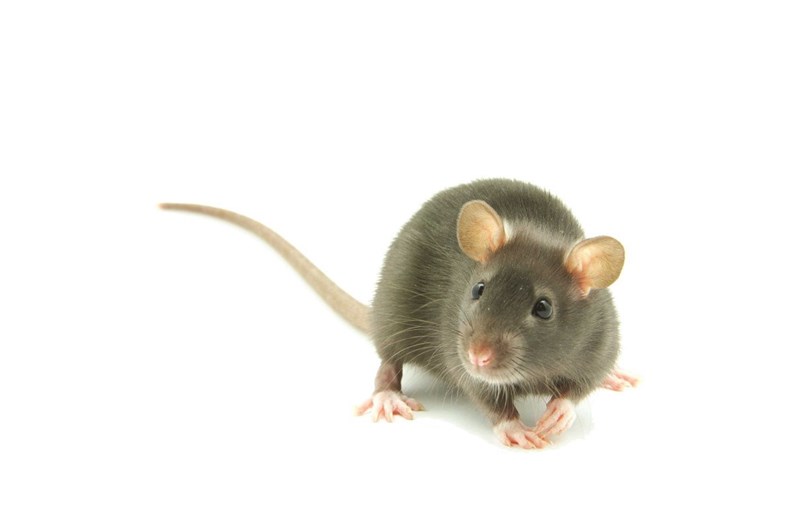Pests are a part of life. Wherever there are people, vermin of one kind or another are sure to follow. This is particularly true in urban environments like Boston, Providence and New Haven, where rodent and roach sightings come with the territory but smaller cities and towns are by no means immune. Unfortunately, pests are not merely gross. Many of them pose threats to humans, pets and property, so controlling or eliminating them is a major concern for all boards and managers.
Bedbugs
Mice come with the territory in most major buildings, even clean ones, and they are fearless. Cockroaches, too, are ubiquitous. But the greatest threat right now is a newer arrival: the bedbug. Whether because of global warming, insect rhythms, or just bad luck, this old pest has experienced a renaissance.
“They had them pretty much eradicated, and then they started making a wicked comeback in the '90s,” says Brad Hall of NW Pest Control in Waltham, Massachusetts.
“Many of us—I’ve been in the industry for 35 years—had never seen bedbugs,” notes Michael Bensche, marketing director at Braman Termite & Pest Elimination in Agawam, Massachusetts. “And then when we saw our first couple of cases, we thought, ‘Well, this is kind of an aberration. This is odd.’ And then you got another. And then it just kind of steamrolled.”
They’re now New England’s most pressing insect problem because, explains Hall, “They’re the most invasive, hard to live with and expensive to fix,” he says.
“We're finding it in all areas, obviously the larger cities,” says Bensche. “But also small towns. We’ve had calls in hospitals and dialysis centers. The bedbug is kind of a hitchhiker, and so wherever people go, it’s got the capacity to be carried along.”
Chris Penn, a certified pest control specialist with Bain Pest Control Service in Lowell, Massachusetts, echoes that thought. “Somebody has to have gone to a place that has them, picked them up on clothing or in luggage, or something like that, and carried them back, or maybe somebody that has an infestation had them on their clothing, and they came to visit, and they dropped them off, They’re seen in buses and taxis and airplanes, cruise ships. They’re really all over the place.”
Used clothing and furniture are other sources. Hall says, “They travel very, very well. They’re well-traveled little beings, that’s for sure. Everybody’s susceptible. It has nothing to do with cleanliness; it has nothing to do with the way that you live.”
Bedbugs can feel like a Biblical plague. They pose an enormous challenge not only because they spread easily but because they’re so hard to get rid of completely. After filling up on blood, they can live as long as a year or even a year and a half hidden in clutter or walls.
The residents of a building can be a problem, too. Pest-control workers can usually get into condo units, since bedbug infestations are considered an emergency, “Most landlords have the power to just access units if they need to,” says Penn. However, he adds, “Tenants are not always willing to cooperate. Are they doing the preparations, are they doing laundry, eliminating clutter, and things like that. Those are probably our biggest hurdles to overcome.”
The best approach is multifaceted. The idea of just spraying a building willy-nilly in hopes of killing the pests is outmoded. Not that pesticides aren’t still used, but there are also vacuuming, heating, steaming, freezing, even using duct tape. “If its a low level infestation, we’ll use something as low tech as duct tape to just kind of pick things off, just pluck them off one by one as we’re going along,” explains Penn, “or vacuum cleaners, if there’s a higher level of infestation. We really want to try to physically remove as much of it as we possibly can.”
So first get rid of all of the ones that you can find visually. Then you might use another technique. Conventional spraying is effective. “The treatments are spread out,” says Hall. “They’re spread out three weeks apart, and you have to be out of your house for four to six hours post-treatment because we use a heavy fog. We’ve found that a crack and crevice spray and a heavy fog really, really does the trick. And the reason that it’s spread out over a one and a half month period is because you have to get all the stages down to the eggs. And the eggs, you can’t kill conventionally. You can kill eggs with heat, but you can’t kill them conventionally. They actually have to hatch and get into the chemical to die off.”
Heating is interesting because its use is fairly widespread now, and it doesn’t require the extensive prep work by residents that spraying does—cleaning and bagging clothes and so on—nor evacuating the premises for hours at a time. “Heat is really viable for getting rid of bedbugs,” says Bensche.
“Bedbugs die at 122 degrees,” Hall says. “That’s their kill temp. We raise the temperature in the infested room/unit depending on the situation to somewhere around 140 and hold it there for usually a couple of hours and then slowly bring it back down. We show up about 7:00 a.m. the day of treatment, and you could be back in your house at 6:00 that night.”
Freezing and steaming are more focused treatments. “We have portable steamers that we bring in,” says Penn. “And the steam is great. It’s 212 degrees of heat coming out of there, so we’ll go along the tufts and the ticking of the mattresses and box springs and headboards and things like that. That’s to cook eggs more than to eliminate the bedbugs themselves.” Freezing with cryonite is relatively new and isn’t in widespread use. It works in the opposite direction from steaming but in the same way lasers in to kill immediately within a limited range.
And then there are dogs, which are especially efficient in tracking down how widespread an infestation may be within a building. “So here’s a situation,” says Hall. “We had a 24-unit building, and we’ve got nine confirmed infested units. We’re going to bring the dogs in to deal with the rest of it because it would take two guys a half a day to go through it right.” Bensche says Braman Termite & Pest Elimination has their own canine, Bugsy Braman. “Canine scent detection is awesome,” says Bensche. “The dog is letting his nose do the work, and his nose is a thousand times better than my nose. And so they’re able to get the job done, just like they can smell drugs and bombs and cancer and cadavers and everything else.”
Rodents and Roaches
The same as bedbugs, rodents and roaches spread. “If somebody in any given unit is complaining,” cautions Penn, “it’s super important to try to get into surrounding units.”
Once you know the extent of the problem, the next step is obvious: find where they’re getting in. “You want to try to find those access points,” says Penn, “like the plumbing, the electrical conduit, and try to fill those areas with caulking or sustainable foam or something like that to block those egresses. A mouse only needs a hole about the size of the end of a pencil to be able to gain access to a structure, so filling those areas is pretty important. They have a skeletal system that is very, very pliable, and they can really squeeze through pretty tiny holes. It’s pretty amazing. They say the rule of thumb is that mice, if you have a hole about the size of your pinkie, they can get in, and rats will get in a hole about the size of your thumb.” When access is blocked, you go to work on the resident population. Bait, traps, and glue boards can all be used to do the job.
What about the ultrasonic plug-in device like we see advertised on TV? It’s supposed to emit high-frequency sounds or vibrations in such a way to scare off the mice. “It might work for a couple weeks,” says Hall, “but guess what? They’re going to get used to that noise, and they’re going to come right back. They don’t work.” Especially in cities, everything’s vibrating all the time, and the mice ignore the vibration—or for all we know, dance to it.
What can owners, managers, and residents do to prevent these pests? “Clean, clean, clean. Cleanliness goes a long way because if you don’t give them anything to eat, they won't be there,” recommends Hall. And when should people be especially vigilant? “Spring/summer is by far the busiest time of year for every pest-control company,” states Hall. “Everything is moving, mating, and just going to town.”
Choosing a Company
Those responsible for a building’s pest control can try going it alone but most find the prudent choice is to hire a good company. When making your choice, Bensche advises to look for a company that has been in business for several years and has proven the test of time. Also, he maintains you should make sure to get references and certifications. “References are huge. Obviously proof of insurance and licensing, those are givens. Perhaps membership in the national or local pest-management association. That shows that they’re connected with the industry as a whole.”
Greg Olear is a freelance writer and a frequent contributor to New England Condominium. Editorial assistant and staff writer Judy Hill contributed to this article.







Leave a Comment